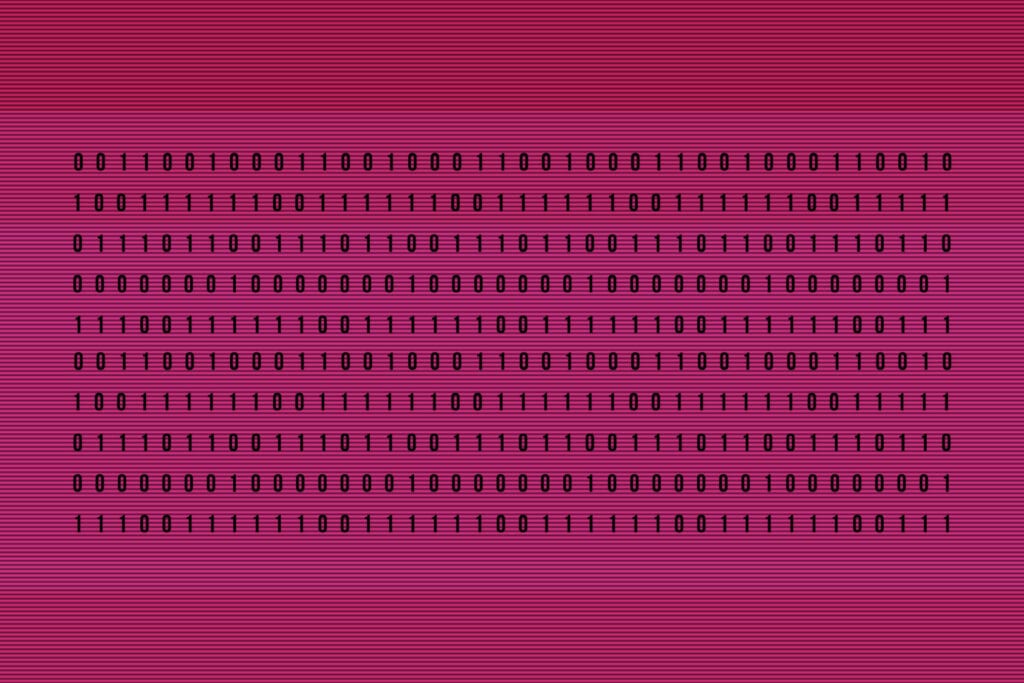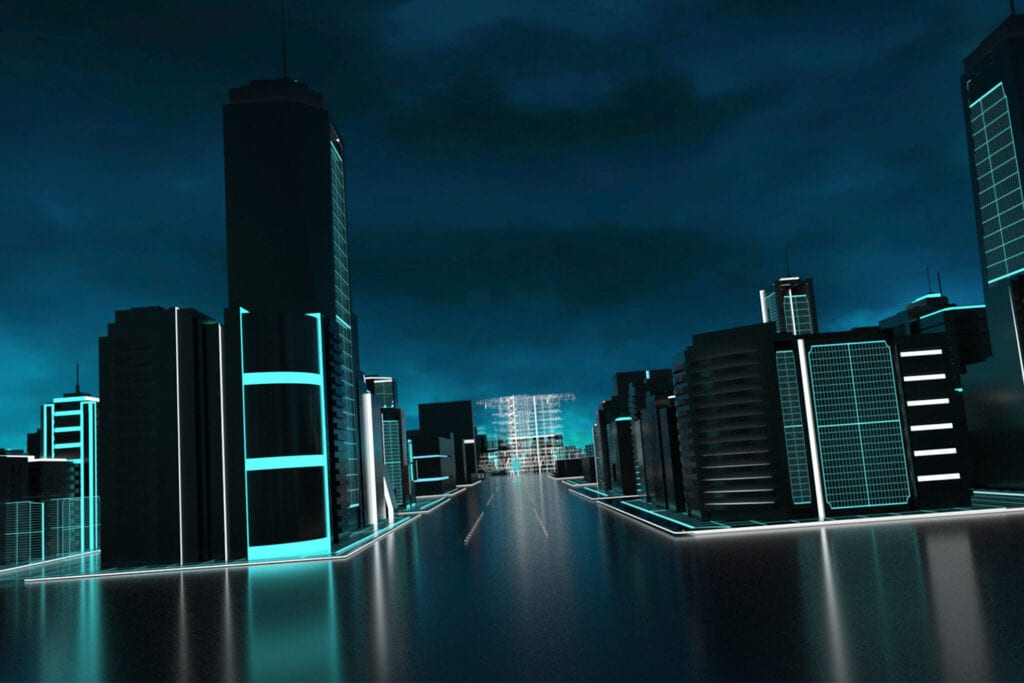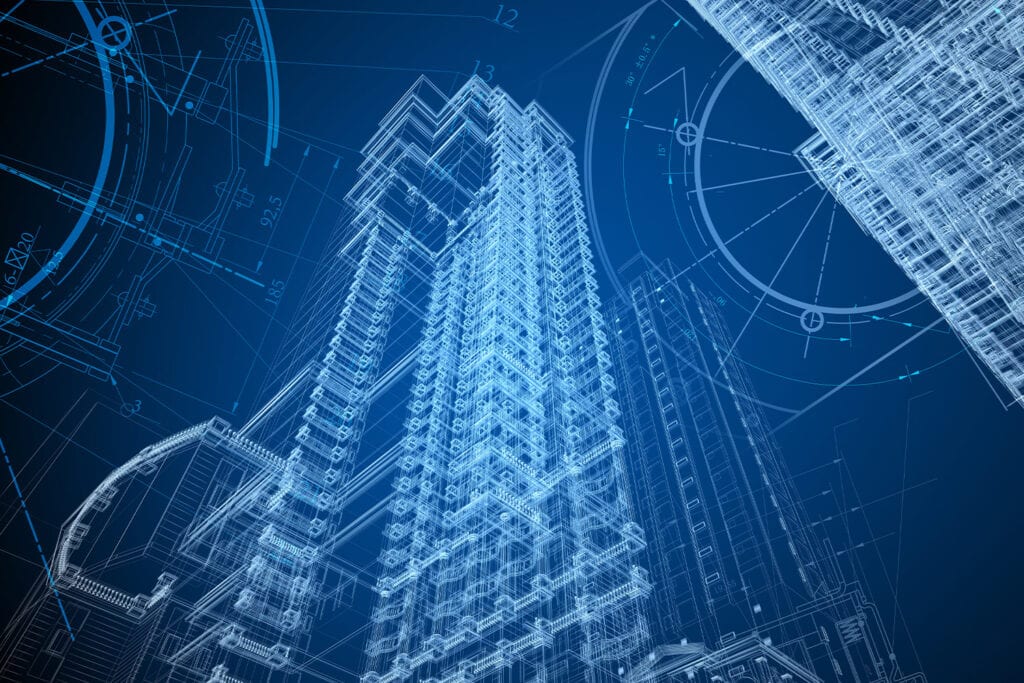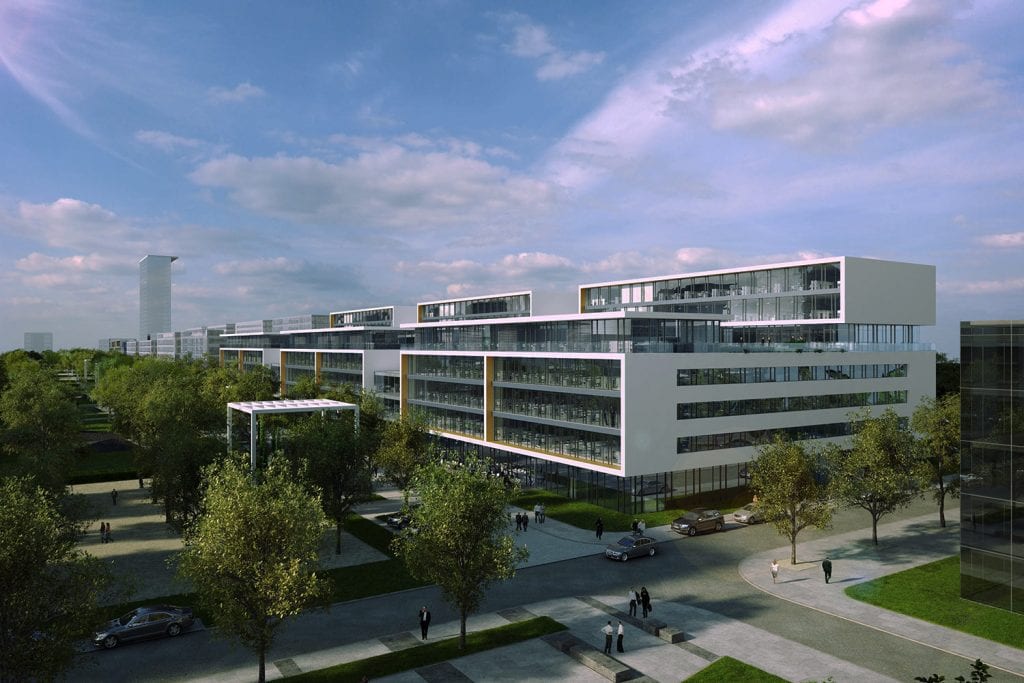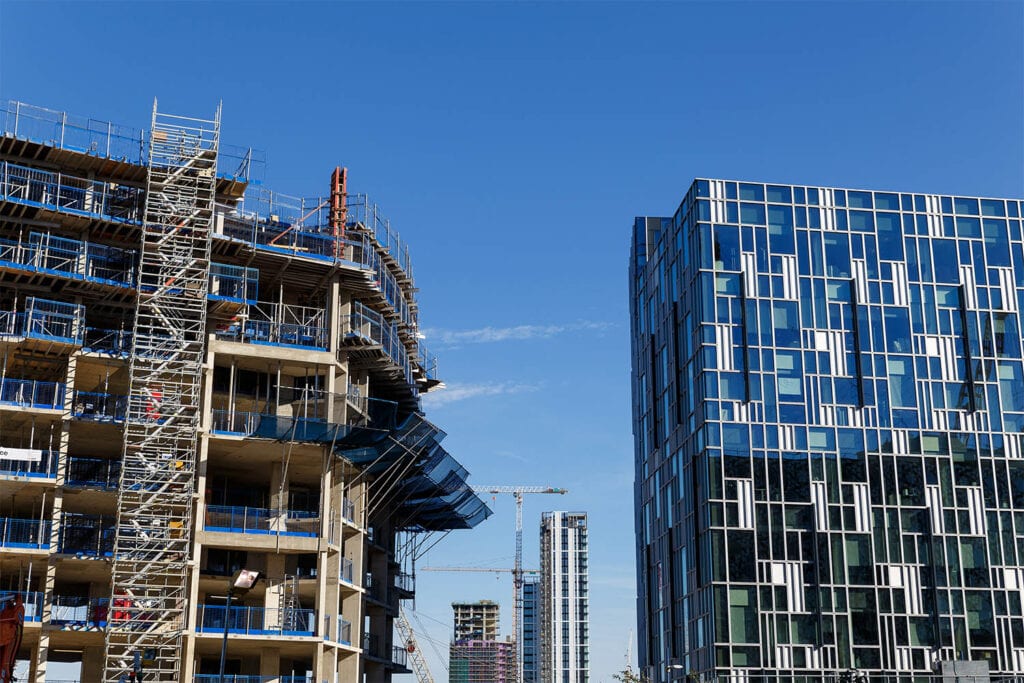Digital discourse
There’s no doubt that technology has transformed the way we work. From open-source collaboration with the BHoM and mapping buildings using spatial data in GIS, to Microsoft Teams allowing us to work effectively from home, the construction industry is embracing digitisation.
Digital technologies have revolutionised the design of the built environment. Technology is ingrained in both the processes and outcomes of our profession. But is there a danger that we rely on it too heavily? Does overuse of technology inhibit the creative process, and create barriers to true connectivity?
Interviewer and podcast host Victoria Bentley spoke to new Partners Elliot Felix, Panji Grainger, Abhijeet Kulkarni, Robert Okpala, Yasmin Rehmanjee, Dr Mei Ren and Krzysztof Staszewski about their attitudes to technology. They discuss how new digital tools are transforming the way we design buildings and deliver projects for our clients.
Listen to the full episode and read the abridged transcript of their conversation.
Do you think that technology has an image problem? Is the increasing complexity of technology a barrier for engineers?
Yasmin: I think technology did have an image problem a few years ago, where it felt like a barrier. But now, at least within Buro Happold, it doesn’t feel like that at all. It’s just part and parcel of everyday work. Everyone has embraced it. It has made working so much easier, more efficient and more accessible than before.
Robert: There’s a sweet spot between being able to engage our emerging tech-enabled talent and our experienced practitioners, who didn’t grow up with the same kind of technology. I think it’s quite exciting, actually, because we’re learning new workflows, and it feels like we’re learning from each other.
Mei: Technology may have had an image problem in the past, but it’s evolving so fast, we’ve got to embrace it. In the past, people talked about smart cities and the smart grid, but now we’re seeing more and more of these smart applications, which help us to design the built environment better.
Krzysztof: I think technology has saved us. If the pandemic had happened 20 or 30 years earlier, it would have been really difficult to organise our work. Even a year ago, it was quite difficult to imagine that we could work from home, and provide project work with such efficiency without sitting in one office meeting face-to-face. It’s fantastic to have it, and it’s part of our life.
Do we need to get back to the office in order to work really effectively?
Krzysztof: I believe that working in the office is much better; this time spent working from home is definitely “option B” for me.
Mei: I like the mixture of working from home and the office. I’m looking forward to going back to the office to meet with people and clients. I do think this it is essential. However, I do believe that technology will be here to stay and we have to embrace it.
Yasmin: It’s important to have some aspect of face-to-face meetings in our lives. But, I also think it’s really important for us to not lose sight of everything we’ve learned in the past year, in particular how remote working has helped in terms of accessibility. It’s especially important, when you start thinking about equity and being inclusive. Remote working opens up so many more opportunities for lots of different people who are at different phases in their lives to be able to juggle.
For me personally, it’s huge. I have a six-year-old son and I definitely spend way more time with him now than I ever did, even as a baby, and it’s been fantastic. But I also desperately miss interacting with my team and clients. The balance is different for different people. It’s really important to try and figure out how to make it work, because I think that’s at the core of making Buro Happold equitable and inclusive.
Robert: It’s an interesting point. I’ve seen video conferencing, particularly when I was in the Middle East, where it really does feel like you’re in the same room. You’re in different parts of the world, but you actually feel like you’re in the same room, you can see people’s expressions up close.
But, as Yasmin says, everybody is different. I’ve noticed that emerging talent can have a intimate relationship over social media, develop things and engage in design successfully. But for me, it’s something I can’t get my head around. So, I think we need to find that flexible scenario where technology helps us engage in a way that suits our needs.
For example, if I’m one-to-one in the office, I also know I can engage with somebody remotely and it feels like we’re in the same room. Remotely, how much are we really engaging? When we are face-to-face, it feels like we are engaging a lot more.
Panji: In the last year alone, one of Buro Happold’s differentiators was our ability to transition seamlessly to online, remote working, and to be able to continue doing what we’re doing . A lot of our competitors struggled in what was a very difficult time, and still is difficult.
We have the ability to work remotely using Revit, unlike many other companies, and that’s thanks to our brilliant computational team. We have been able to develop rapid prototyping, and push some of the climate, embodied energy and operational energy stories remotely. I think that’s a big differentiator for us at Buro Happold, and we should give ourselves proper credit for it.
Abhijeet: In terms of working from home, I seem to start every meeting saying can you hear me? Can you see me? You’re jumping from one call to another, and it’s exhausting! But it has taught me that this is an alternative way of doing business. Before the pandemic, we probably thought that working from home did not work for consulting-style businesses. All this is in the past now, but how efficient this style of work is depends on your surroundings, your connectivity, and your feelings about it.
Going forward, we’ll be looking at a mixture of styles, with some people in the office who are client-facing, and the “doers”, who could perhaps visit the office once a week, and use their time more efficiently. I work in Mumbai, and commuting is a hassle, people spend an hour or so travelling each way. Working from home means you save this time, and are perhaps more efficient.
I agree with Panji in terms of being ahead of our competitors. In India, we are competing with everyone from “one-table” consultants to multinational companies. Thanks to Microsoft Teams, BIM360, etc., we’ve been successful in delivering projects efficiently and on time.
We’ve talked about how we work with technology. But what the new digital services we are offering at Buro Happold?
Panji: It’s a great time to be at Buro Happold. Look at the work that we’re doing with SmartViz, the digital consulting work Robert is doing with Google, as well as our climate change work, and the evolution of the data-gathering capability. It’s a really exciting time to marry together some of our core services with some of these emerging digital consulting services. The transition over the next five to six years will be very exciting for us.
Robert: The construction industry is a bit slower than a number of other industries in terms of embracing technology. There’s lots of room for improvement! But what’s good about Buro Happold is it’s something that we’ve known about for a long time – data is the new oil.
Collating and understanding data helps drive performance and business intelligence outcomes. This focus on data is really going to be part of the conversation around transforming things, from organisations and projects to trying to reach net zero carbon operationally.
Krzysztof: Technology has helped us to improve our internal efficiency, thanks to all the scripts and clever tools we’re inventing. This means that people can concentrate on creative development, focusing less on repetitive tasks.
Mei: I think the construction industry is slow-moving, and there’s a lot of dispersed data around. Buro Happold helps a lot of public sector organisations with their energy audits, and to do this, you need to find the right historical data for that building or development. This is something Buro Happold can offer. GIS is another fantastic tool, as it maps the spatial information for buildings and cities at different scales of data collection.

Are we leading the way in technology at Buro Happold, compared to our competitors? Do we talk about it enough?
Elliot: We’ve been doing more and more consulting, looking holistically at the student experience at universities and colleges. Increasingly, that experience is online, certainly over the last year. Online learning had been growing at about 10% per year, and roughly a third of students were taking at least one course online. Almost overnight, that percentage became upwards of 90 to 95%.
We’ve been doing these studies to understand the student experience, everything from the admission process to how students get career advice, to how they pay their bills, to how they talk with librarians. The studies are a combination of design thinking, engagement, communication and technology. I think that has been our unique selling point.
Recently we won a student experience consulting project when we were up against Deloitte. Brightspot is 15 people within the Buro Happold family, so very small compared to Deloitte. We must be doing something right! It’s a good feeling to beat somebody 3000 times your size.
Yasmin: I think one of the approaches that Buro Happold has taken with technology and computation that sets us apart from our competitors, is the BHoM. It’s accessible and open not just to Buro Happold but to the world. The open-source nature of the BHoM shows how we do want to share and improve technology for the industry.
We don’t have a core group of computational specialists who operate in this technology, developing the various tools. Everyone at Buro Happold embraces it, contributes to it, and extracts from it. I think that does differentiate us from our competitors and give us a little bit of an edge.
I want to talk about the future of your roles as Partners and the future of technology at Buro Happold. What are you excited about? How is your work going to change?
Abhijeet: Thankfully, I was recruited at that level to start with. I’m filling in the huge shoes of somebody who’s retiring as one of the strategic stalwarts of Buro Happold, Anil Hira. He has left a fantastic legacy, and I’m going to have to put myself out there with clients, with outreach work, and with technology. That’s the challenge for me.
In terms of technology, the “young guns” from our team have embraced it much faster. What we need to do is ask them to teach us, so they become our tutors, irrespective of seniority, for at least the next six months, to bring the leadership up to speed. We have aged brains, and to grasp technology quickly, it becomes difficult.
Panji: It’s exciting becoming a Partner. Being in Chicago, the Partner role really opens up the opportunity to explore the Midwest for our US practice. I’m looking forward to working in partnership with Elliot and the brightspot team, particularly with what brightspot brings to the table in terms of consulting and advisory services.
What gets me excited is the net zero carbon and decarbonisation story. We’re able to marry our traditional core services with the sustainability and consulting offering, bringing real value to clients, and differentiate ourselves from our competitors by driving down carbon usage under the narrative of net zero.
Krzysztof: I’m excited, but I have a mixture of different feelings. The change to Partner will happen step by step, and I’m looking forward to becoming more of a “contact” person in the Warsaw office for external clients and for work winning. The other part of my role will be building the Buro Happold brand in the European market, and of course technology will be a big part of that.
Elliot: Becoming a Buro Happold Partner is a lot of change during a time of change. Brightspot is very excited to have the opportunity to scale up our work, and to have such amazing complimentary services in sustainability, technology and economics.
We’re already doing great things together. For example, we’re working on a market study for a university that wants to know if they should create a new degree programme. This project is a great testament to how brightspot and Buro Happold complement each other. We’re doing a needs assessment, understanding who the students of the future are, what and how they want to learn and what their interests are. Alongside that, the Buro Happold economics group is working out how much they’ll pay, how many potential students there are, as well as things like what the capture rate can be and how elastic the demand is.
There are real existential threats within higher education. Most campuses are overbuilt. As campuses start to account for online learning, remote working, and the upcoming demographic cliff in the US, the average large research university is going to find themselves with a 10 to 20% space surplus – there will be more seats than there are students.
We’re very excited to have the resilience and reuse conversation with campuses. There are much smarter ways for universities to move forward, instead of defaulting to building new buildings, that they may not need and can’t afford. These are going to be exciting conversations that I don’t think we would have had on our own last year. Now we can have them with the best firm in the world.
Mei: For me, becoming a Partner means a big shift in mentality. I have been an office director for years, and my engineers and colleagues often asked me to make decisions in terms of research applications or proposals. Before, it was up to the Partnership to decide whether to invest or not. But now, I’m one of the decision-makers. Technology will be one of the biggest drivers as we grow.
Yasmin: I’m super excited to be entering the Partnership, as I’ve spent decades implementing the vision, and now I’m able to create that vision. The best bit about this is that I can do this whilst listening to my team. You know, we need to learn from our younger engineers. We’re a big team in the United States now, over 300, and we want to figure out where we want to go next in terms of growth. If we engage and listen to our younger engineers, they’ll be passionate about taking that journey with us.
We’re at a time in collective human history where we have the opportunity to really make a difference within the built environment, especially in terms of the climate emergency that we’re facing. We have the technology, the tools, and the ability to make a positive impact.
Robert I’m feeling pretty good about my new role as Partner. I’ve been at Buro Happold quite a long time, and the excitement I feel is still here. I’ve joined the Partnership with a cohort of fantastic people, there’s so much energy, so much drive, and coupled with the existing Partners, we have a phenomenal team. It just feels really electric to be in this place at the moment.
Technology is what I’m passionate about. I actually think the combination of technology, workflow, engagement, and collaboration is our sweet spot at Buro Happold. We know about buildings, we know about people, we know about technology. Through those, we gain insights that help our clients achieve more from their assets and organisations, allowing them to achieve their goals. For me, that’s super exciting. What more could I ask for?


